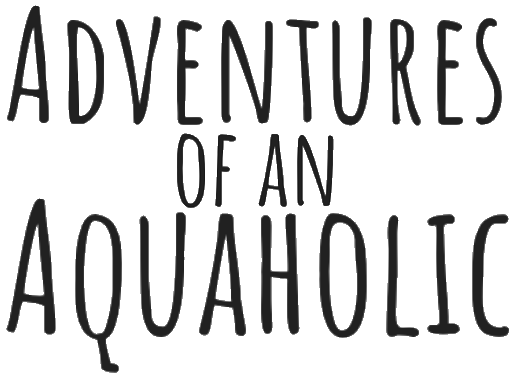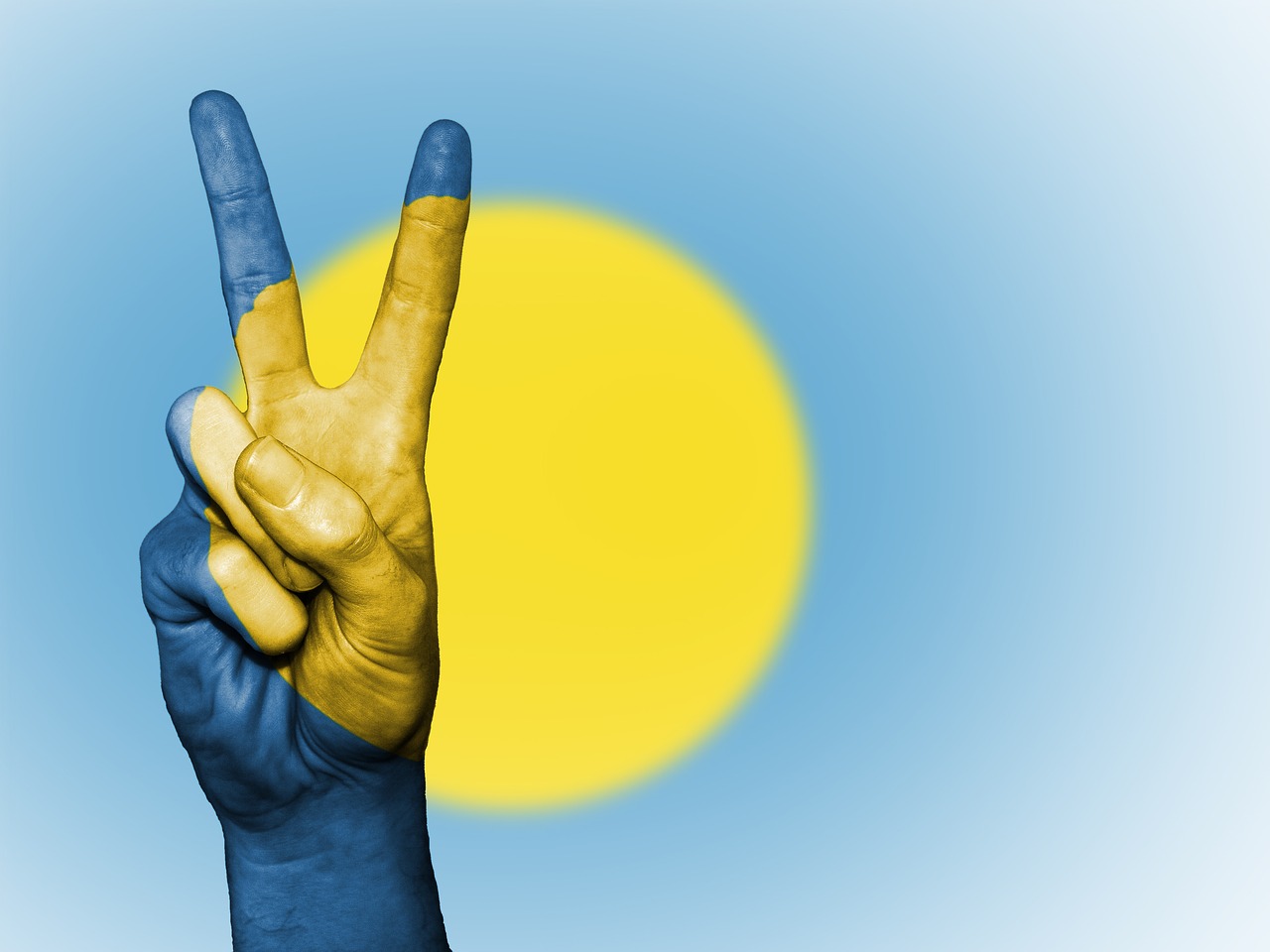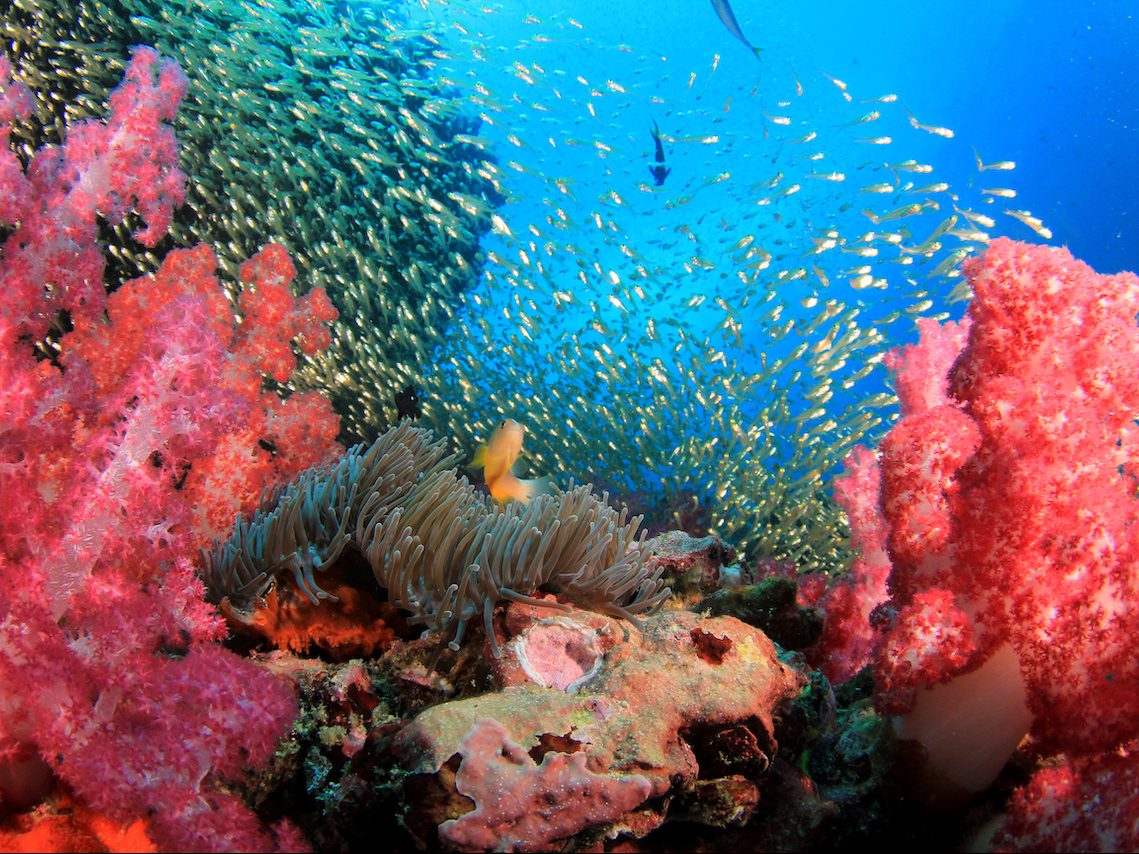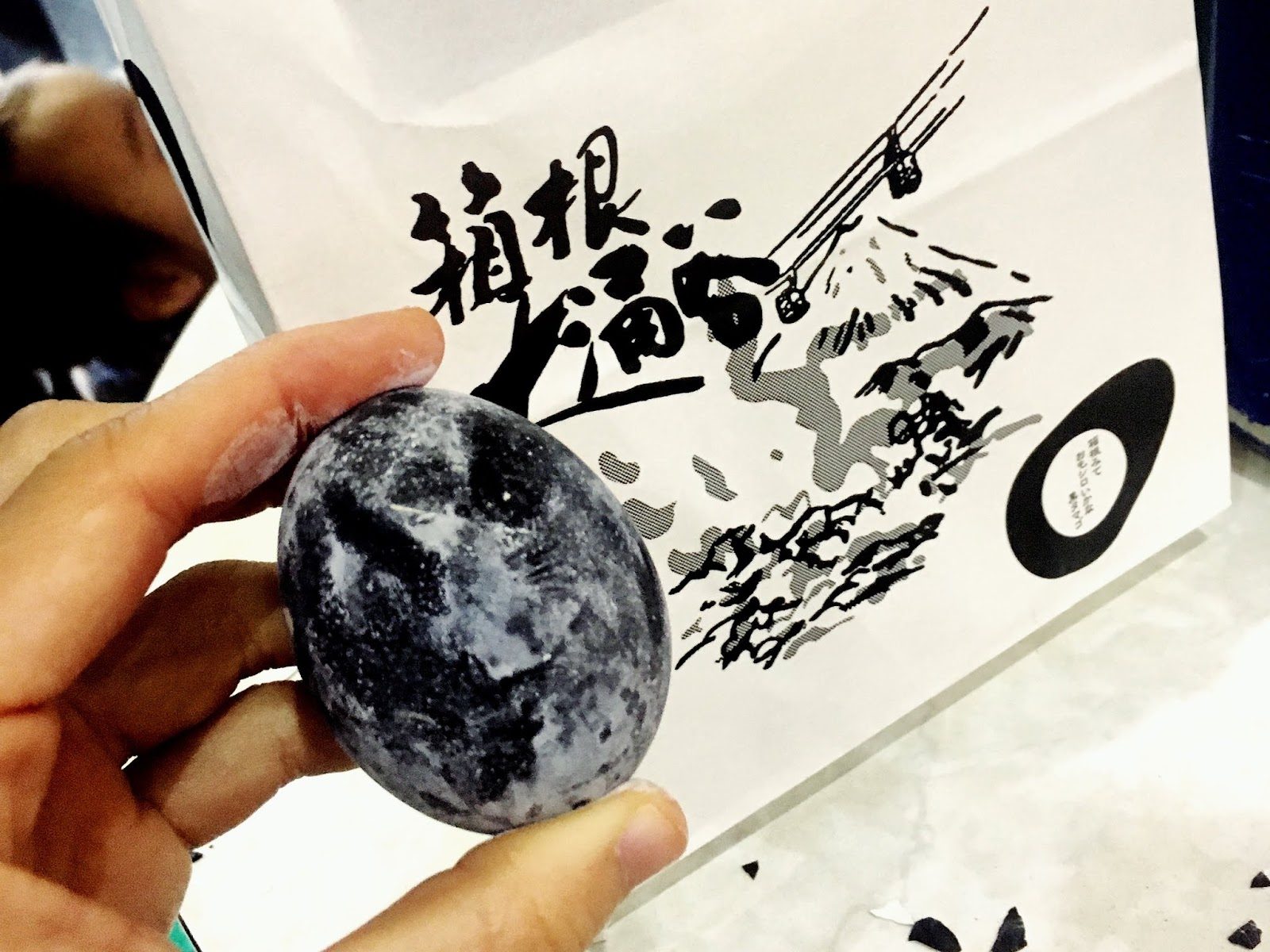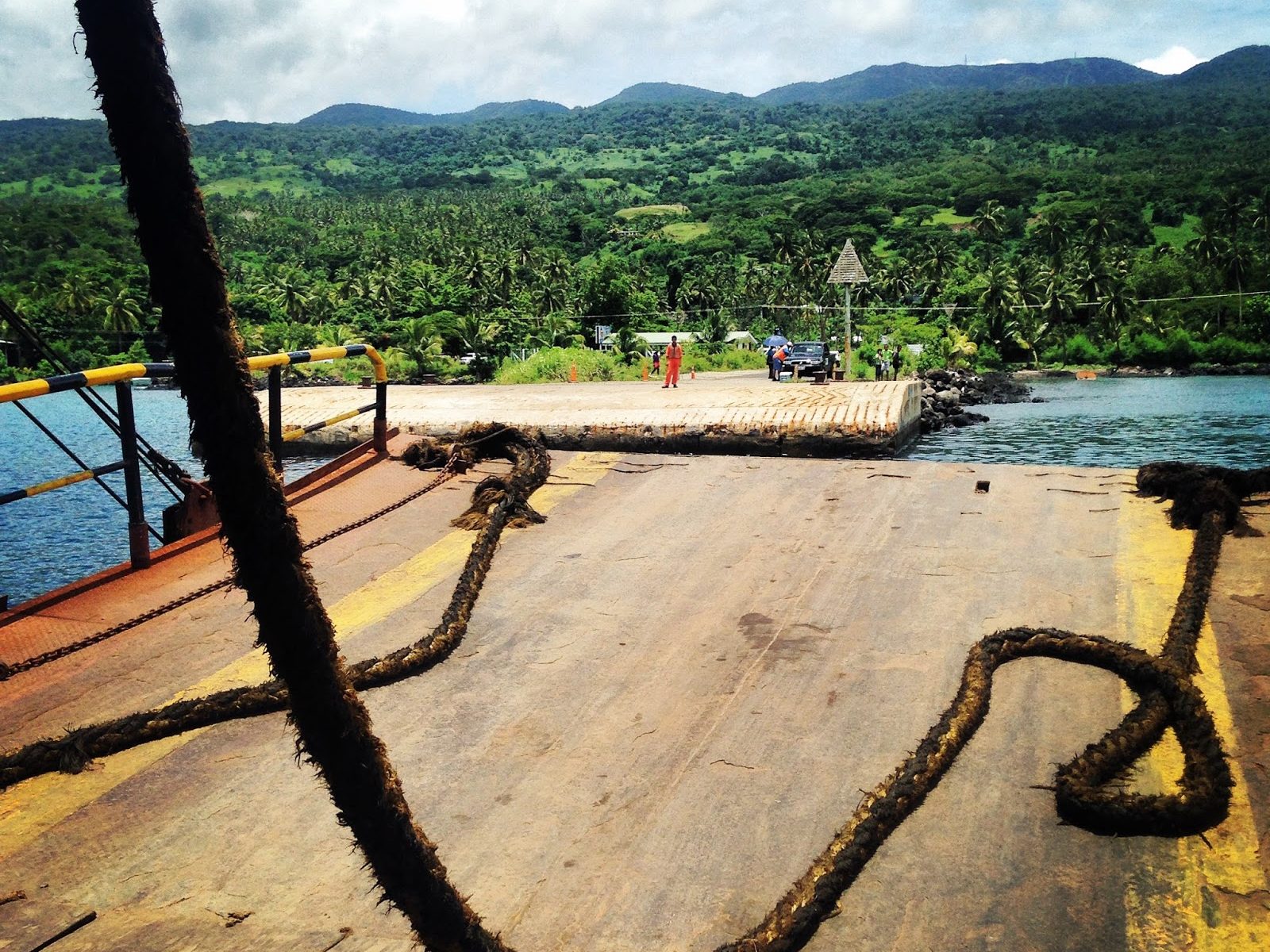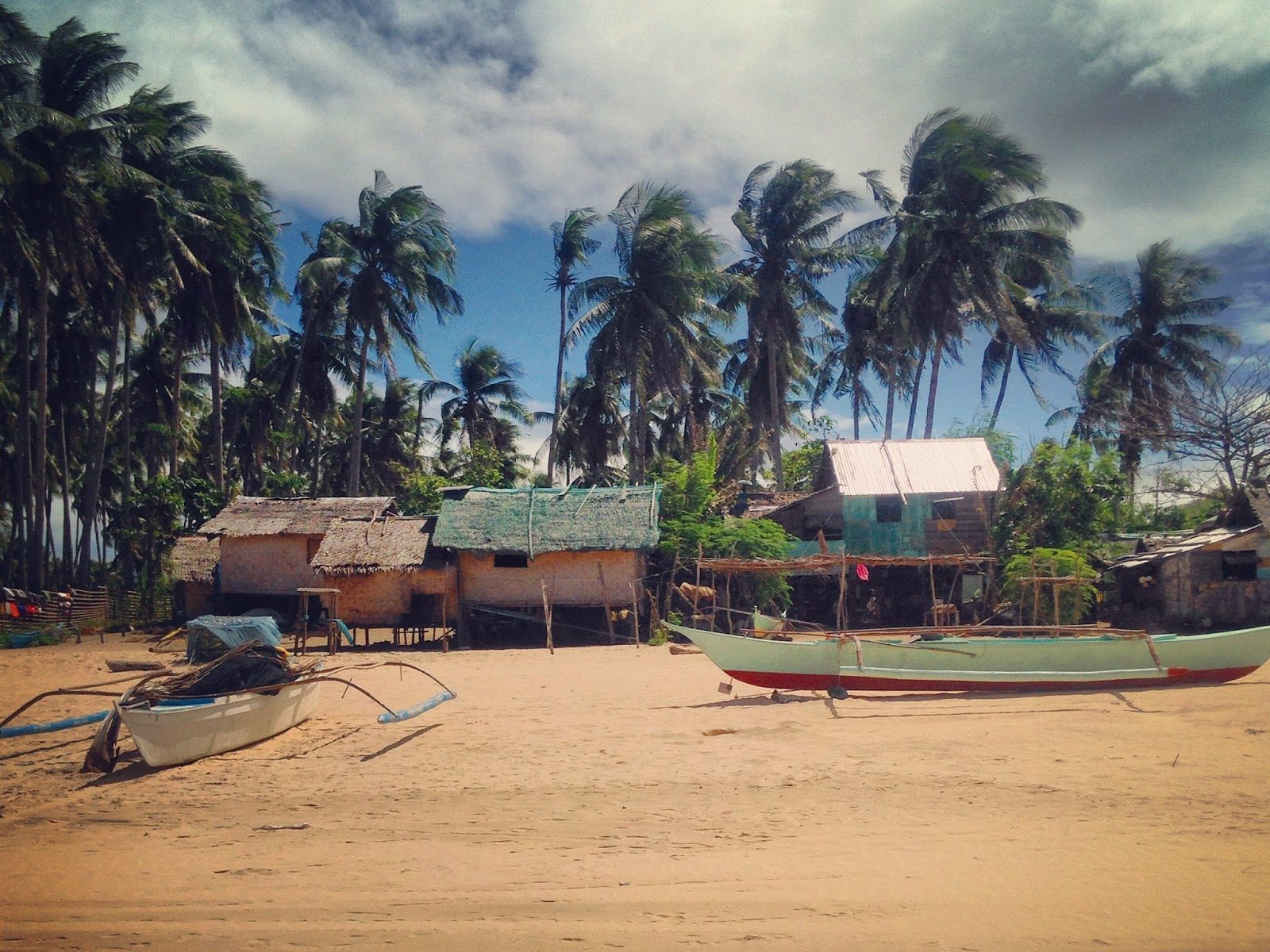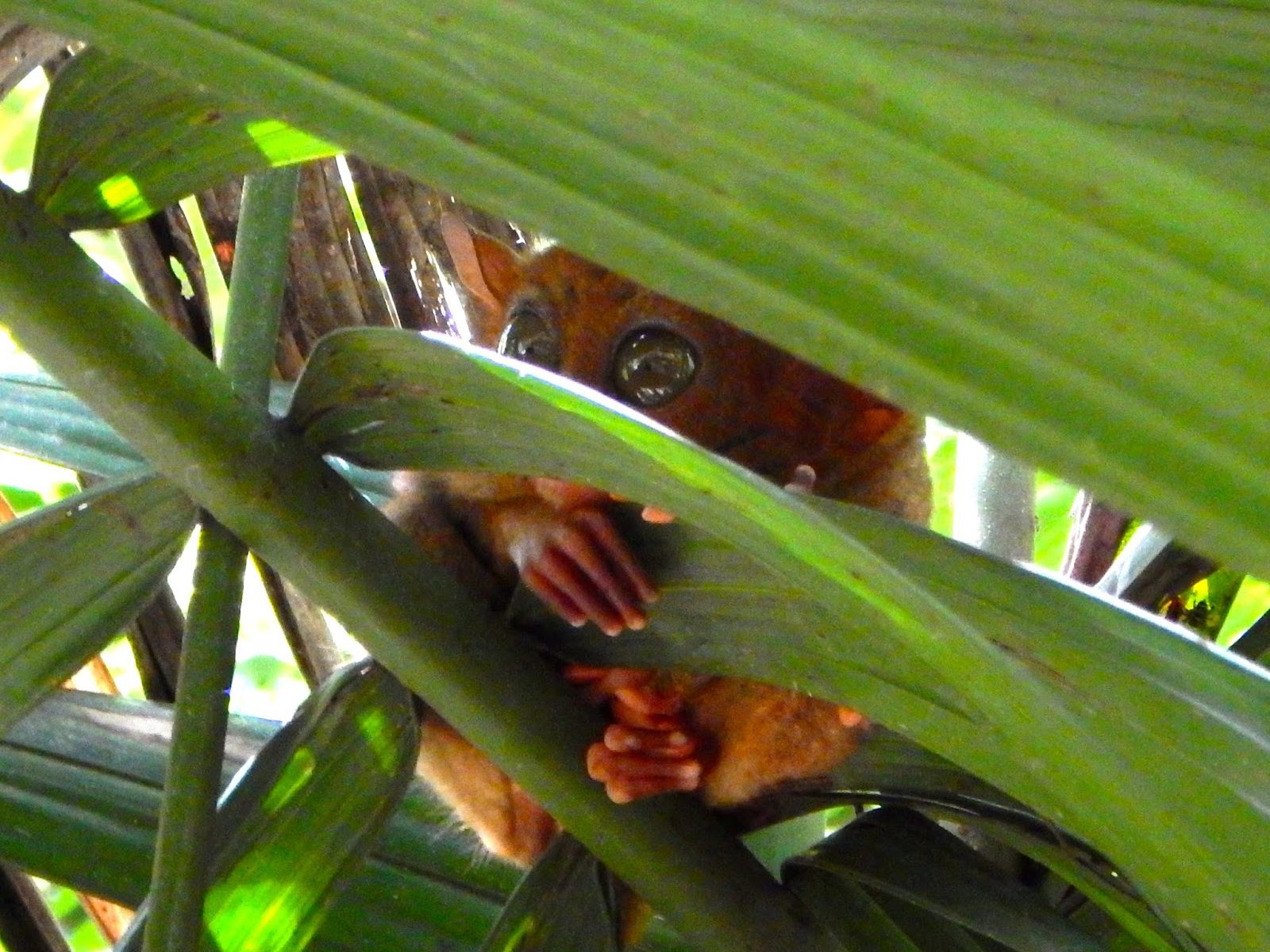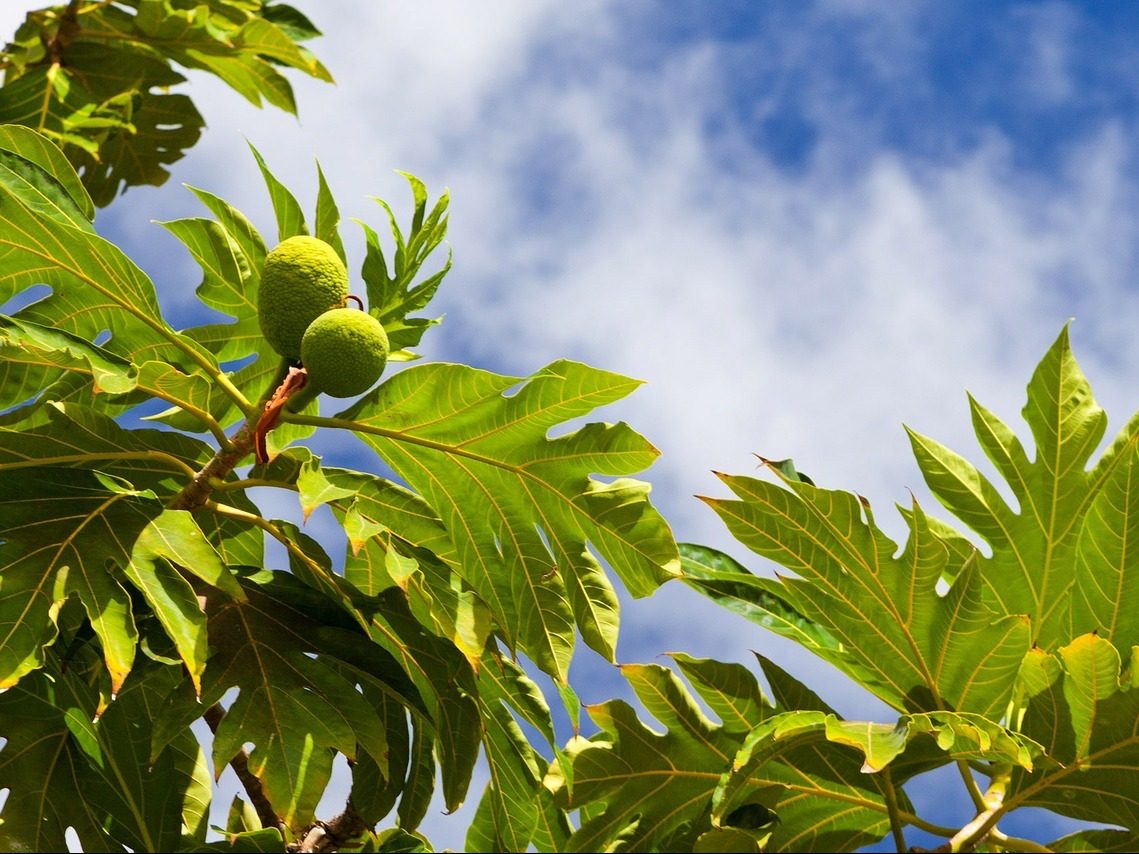
Wednesday morning we woke up bright and early and headed over to the Remax Office. Risong, our new realtor, was going to show us houses on Babeldaob (ba – like a sheep, ble – like the end of bible, dob – rhymes with Bob). We picked up Risong in our rental car and the three of us made our way north.
I’m sure I’ve described the layout of the islands by now, but incase you’re just catching up, Koror is the main island where everything is located. Businesses, hotels, government buildings, everything. There is one main road that runs the entire island, east to west, and takes about five minutes to drive from one end of the island to the other. The west end of the road forks off and you get the island Arakabesang to the northwest (haven’t learned how to say that one yet), and the island Malakal to the southwest (that’s where our hotel we moved to was). When you reach the east end of the main road, it curves up north and leads to the Japan-Palau Friendship bridge, a beautiful bridge that connects Koror to Babeldaob. Babeldaob is a big island to the north. There are no businesses there except for the airport, and the capital building. Besides that it’s just little villages scattered about where people live.
As we passed the airport, Fletch pointed out a drone. Risong cheerily chimed in, Oh yeah, the President asked for a drone. No big deal. Between that comment and our recent driver’s test asking a dozen questions about what the president could and couldn’t do, he was sounding like a funny character.
We drove 45 minutes north, farther than we had been on our previous exploration to the capital. The road was surrounded by nothing but lush green jungle, green green as far as the eye could see, except for some red leafy plants immediately lining the road every few feet. Risong informed us that the red plants were a project of the First Lady’s to add some color to the scenery. As if green wasn’t color enough. I told Risong that this time of year Colorado is nothing but brown. She couldn’t believe it.
After nearly an hour in the car, we turned off the main road and drove down to the beach. This was not an artificial resort beach with a field of pure white sand, but a natural beach with trees jutting out where they should be. A few hundred feet from the shore was a little cottage of a house. It was several minutes before we even ventured inside because the beach was so mesmerizing and perfect. We could live here, out in the middle of nowhere, and just play in the water all day.
The house itself was nice as well, beautiful woodwork covering every surface and fully furnished. The only downside was how dark it was inside. I’m noticing that many of the houses here don’t allow a lot of natural sunlight to enter. They’re dark and very closed off. It’s the strangest thing. Maybe after spending their days in the sun on fishing boats, the people are happy to escape the sunlight into the darkness of their homes? I don’t know. But it’s a strange switch from Thailand where everything was always open and very few places had more than three walls. I’ve always been a fan of sunlight. Darkness aside though, we would have happily lived there for all of that private beach.
We got back in the car and drove to another state called Ngiwal. Oh yeah, Palau has 16 states. They operate much the same as US states as far as I can tell so far. Each has their own set of laws and rules. When you get a vehicle, you register it under whatever state you live in. They are much smaller than US states though. The smallest of these 16 states only has a population of 40.
In Ngiwal we drove down a small road that was lined with a dozen or so houses on one side and a natural beach on the other. We stopped outside a building that was the state office. Risong told us to walk around for a few minutes, and to go look at the statue across the street while she went inside. So Fletch and I walked over to the beach to find a large painted plaster statue of a spear fisherman. He was up on a platform, with stairs leading up to him. A few feet away there was another painted plaster statue of a breadfruit tree, two naked ladies gathering fruit, and a man in the tree spying on them. Back in the car Risong explained to us the legend of the breadfruit tree.
As we listened to her stories, we followed the governor’s secretary to a little housing area where there was a place available for rent. We turned off the main road onto a short road on a hillside, which was lined with half a dozen houses on each side. These places were really cute, like they should have had little picket fences running around them. Apparently this was a housing project of the governor’s, to build lots of houses close together and very cheaply. Fletch told Risong that we call those subdivisions in the US. We drove up to a yellow house to which the secretary told us she didn’t actually have a key, but this would be the place where we could live when it was finished. Fletch and I both agreed that the only reason to live this far from any sort of town area would be to live on a beach like the beach house we had just looked at. We left the US to be by the ocean, not to live in Palau’s first subdivision, as charming as it was.
We thanked the secretary but she told us she had one more house for us to look at. We drove back along the road that ran parallel to the beach and turned to a big concrete house up on stilts. At the top of the staircase we found an adorable little kitten. That was the last redeeming feature of the place. Inside, the windows were so dirty that no sunlight came through, stuff was heaped up everywhere, garbage, clothing, belongings, dishes, and the bedroom doors were locked, so we couldn’t actually look inside. There were probably dead bodies being hidden in there.
Back in the car, Risong apologized, saying she had never actually looked at the place, but had only heard of it and so thought we could check it out. With all the dead body jokes, I began to wonder what kind of a place this nice lady lived in, and if we were offending her when we spoke out negatively about how awful some of the places were (not in a mean way of course, just in an honest way). Since most places we had seen were in that shape, there was a good chance that Risong lived in such a place. The thought made me feel bad.
We drove to yet another state, down another little road that ran parallel to the beach, and stopped in front of a pretty pink house. Risong told us as we entered that this was actually her house. Since she spent most of her time in Koror now, she rented out her second home to a Japanese family who wasn’t using it currently, and so she was willing to ask them if we could stay there in their absence.
She led us to the upstairs level, and unlocked the doors to the place we had been hoping to find. It was clean, it was sunny, it was nicely furnished, the kitchen looked like what a kitchen should look like, it was downright beautiful. How did this house exist on Palau? We hadn’t seen anything like this. We ooh’d and aah’d and told Risong multiple times that she had the prettiest house in Palau. It was. Nothing we had seen, even from the outside looked anywhere near this nice.
Risong invited us to a little cafe across the street on the water to sit and chat. I’ve noticed that Palauans like to talk in a formal setting, seated and facing one another. When we met the landlady of Ashley’s place and her granddaughter, they invited us in and seated un in a circle of chairs arranged in the living room where we talked. When we had looked at Heidi’s son’s boat, she had invited us to her porch where she had a circle of folding chairs where we sat and talked. Even when we went back to the Remax office later that day to thank Risong, she brought us into the conference room where we sat around a conference table and chatted.
There at the cafe, we told Risong our initial thoughts, that we liked the beach house and absolutely loved her place, but were unsure about the distance, and then the topic changed and we visited and told each other about our lives for an hour over lunch.
By the time we made it back to the Remax office to drop Risong off, we had decided that being new here, we’d like to stay close to Koror in the beginning until we know our way around and can fend for ourselves better. Maybe if we decide to stay we’ll move to the beach later on. But right now, being 45 minutes from the nearest anything is a little intimidating. We thanked Risong very much for her time, feeling as though we had made a new friend.
The rest of the day was spent running errands. We picked up our driver’s licenses; I have a Palauan driver’s license! It’s really pretty too. I’d post a picture but I nearly compromised my entire blog post last time I tried to add pictures. The internet here…
The past few days have been spent moving into the pink house, much to the delight of our landlady who doesn’t have to deal with the Chinese family now. I’ve been scrubbing the place top to bottom while Fletch has been taking care of registering the car (apparently quite an ordeal that involved jumping around between five different government buildings) and buying us a boat (we went with Heidi’s son’s runabout). So there you have it. In just one week we’ve managed to make ourselves at home here! Our top story of the pink house is really pretty awesome. It may be beat to death and full of termites but the views of both sides of the island are enough to knock your socks off. To the north we can see the Japan-Palau Friendship bridge, and to the south we can see Nikko Bay and the Rock Islands. When you open all the doors and windows, there is so much wind that we haven’t had to turn on the a/c yet. It’s just perfect up here.
And now we can go play.
